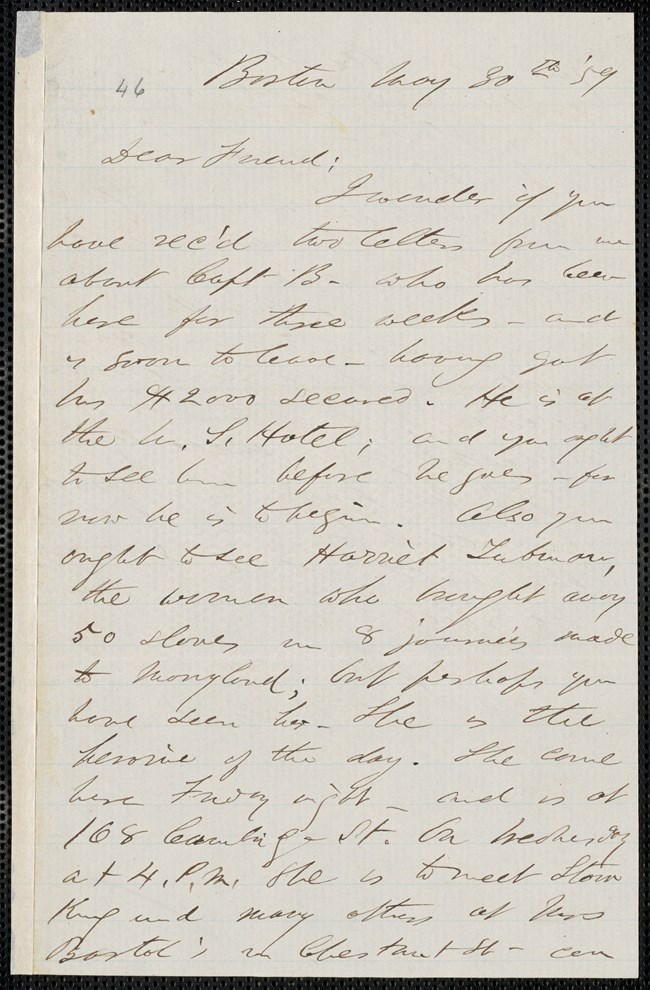Last updated: January 15, 2025
Article
Harriet Tubman's Boston: May, 1859
The following article is part of a series exploring Harriet Tubman's deep connections to Boston, highlighting several key moments, people, and places that illustrate her long relationship with the city and its community. To learn more, visit Harriet Tubman's Boston.

Boston Public Library
"She is the heroine of the day."
The Burrill Smith House, 168 Cambridge Street
In May 1859, Tubman's friend Franklin Sanborn wrote to fellow abolitionist Thomas Wentworth Higginson:
You ought to see Harriet Tubman, the woman who brought away 50 slaves in 8 journeys made to Maryland... She is the heroine of the day. She came here Friday night and is at 168 Cambridge Street.1
African American porter Burrill Smith lived at this house and sheltered freedom seekers here on occasion.2 Tubman received visitors and hosted meetings in her room while staying at Smith's home.
Knowing that slave catchers and other potential trouble-makers might seek her out, Tubman took precautions when meeting people for the first time. According to her friend and early biographer, Sarah H. Bradford:
It was curious to see the caution with which she received her visitor until she felt assured that there was no mistake. One of her means of security was to carry with her the daguerreotypes of her friends, and show them to each new person. If they recognized the likeness, then it was all right.3
While Tubman often stayed and worked with activist friends in the African American community, she also deftly moved around the circles of Boston's elite, meeting with wealthy White supporters and fellow reformers in their homes. Tubman knew her audience and sprinkled her stories with humor and plain-spoken humility. She kept her listeners enthralled with tales of her life and escapes. Suffragist Ednah Dow Cheney wrote that Tubman "has great dramatic power...the scene rises before you as she saw it, and her voice and language change with her different actors."4
Footnotes
1. Kathryn Grover and Janine V. Da Silva, "Historic Resource Study: Boston African American National Historic Site," Boston African American National Historic Site, (2002), 168.
2. Grover and Da Silva, "Historic Resource Study: Boston African American National Historic Site," 168.
3. Sarah H. Bradford, Harriet Tubman, the Moses of Her People (New York: G. R. Lockwood and Son, 1886), 116.
4. Kate Clifford Larson, Bound for the Promised Land: Harriet Tubman, Portrait of an American Hero (New York: One World, 2005), 169.
